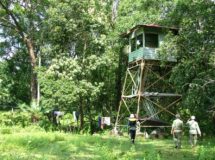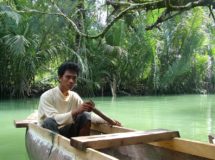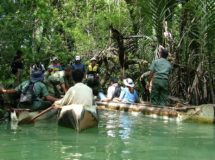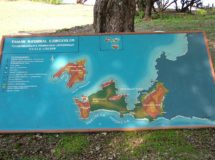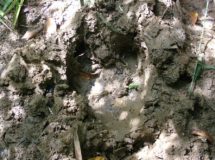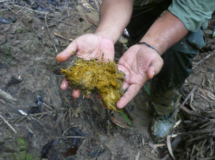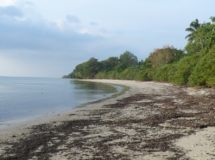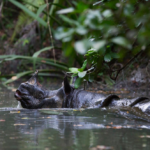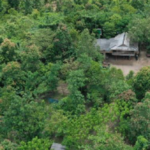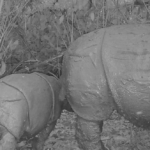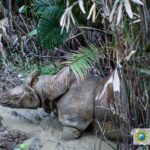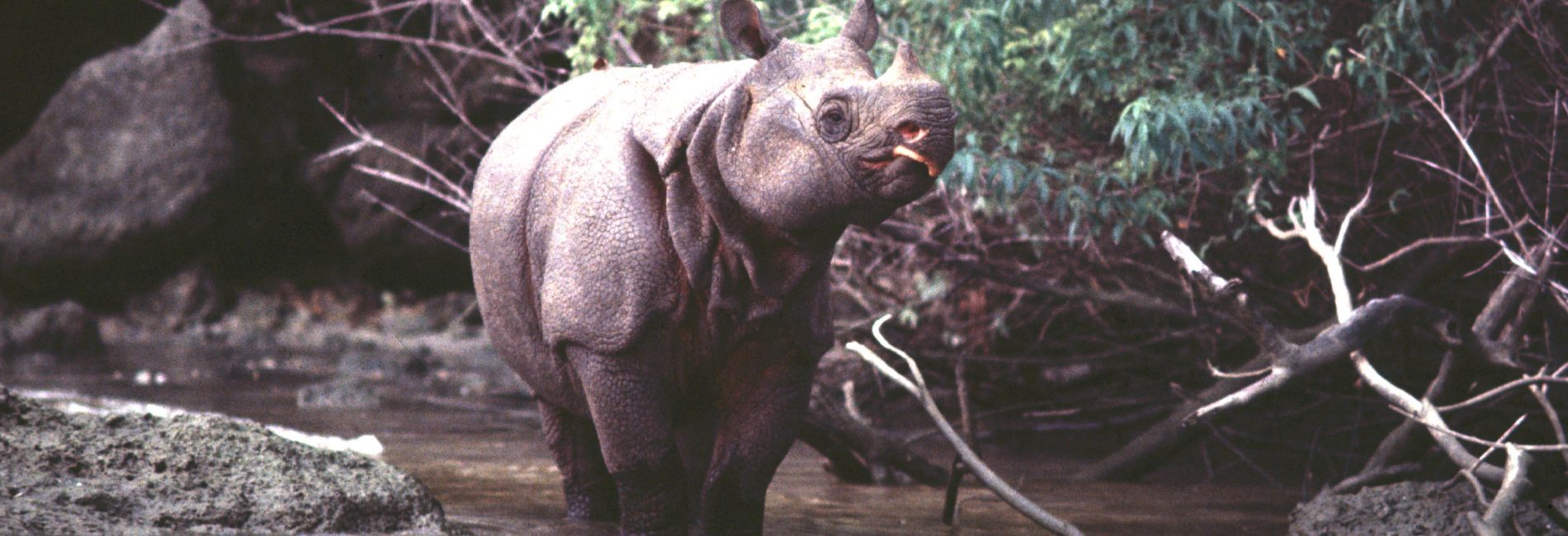
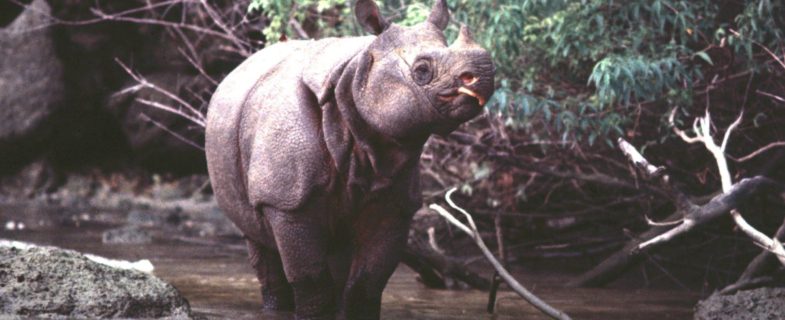
Indonesia: Ujung Kulon National Park
Whilst the last Javan tigers disappeared from Java by the 1970s, Javan rhinos were able to cling on in the forests of a peninsula to the west, an area set aside for their protection known as Ujung Kulon National Park (UKNP). Following the species’ extinction in Vietnam by 2010, and with none living in captivity, these individuals are now the last known Javan rhinos, with official government reports from 2022 stating that there were 76 individuals left in the wild.
However, since 2023, news has come to light of rhino poaching syndicates admitting to having illegally killed up to 26 rhinos in the Park. The Government and police continue to investigate this, but the actual number of living rhinos is currently unknown.
The problem
Javan rhinos adore water and, historically, they ambled along the beaches looking to supplement their salt intake. In recent years, more and more fishermen – some constructing platforms – have attempted to fish illegally off the coast of UKNP. Being highly sensitive to human activities, fewer and fewer rhinos were habituating the coast as a result of this disturbance, meaning that these gentle giants were having to travel deeper into the forest in search of other sources of salt. Furthermore, if rhinos were sighted on the beaches, there are concerns that opportunistic attempts may be made to poach a rhino while it is out in the open.
Unfortunately, protection from humans alone is not enough to save the species from extinction. Invasive Arenga palm trees shadow the rhinos’ preferred food plants, whilst livestock diseases such as trypanosomiasis, haemorrhagic septicaemia and, potentially, anthrax have likely been responsible for the deaths of several rhinos during multiple outbreaks since the 1980s.
However, perhaps the greatest concern comes from the Park’s vulnerability to natural disasters. It lies adjacent to the Indonesian Sunda Arc, where converging tectonic plates often generate earthquakes, which, in turn, cause tsunamis. In addition, the Park lies close to Anak Krakatau, a large volcano, whose predecessor’s eruption in 1883 – one of the largest on record – caused tsunamis that inundated this peninsula, killing more than 36,000 people and destroying the rhinos’ habitat.
The rhinos primarily occupy the western half of UKNP and many – despite the risk of disturbance from fishermen are concentrated around the coast, putting them at an increased risk of drowning if the Park were to be flooded. In December 2018, Anak Krakatau itself erupted, causing a tsunami with waves reportedly reaching five metres in height. No rhinos were reported to have been harmed in this incident; however, next time they may not be so lucky.
How are these problems being tackled?
With the species’ single population vulnerable to so many threats, it is essential that this existing population is protected and able to grow. The ultimate aim is that a second viable population is established elsewhere within its historic range, in the event that the UKNP population were wiped out. The key towards accomplishing this goal is to create conditions that will allow the existing population to expand.
First, the rhinos are intensively monitored using remote camera traps to estimate the population’s size, identify which rhinos are using the habitat, what sex they are, and how they are using it. Camera traps are a more effective means with which to identify individual rhinos than by analysing footprints, as the images capture unique characteristics such as wrinkles, scars, horn size and shape, and neck folds, enabling the Park’s staff to distinguish between rhinos.
Rhino Protection Units (RPUs) have been in place for decades to monitor and protect the UKNP population from poachers. Terrestrial RPUs patrol the forests, searching for intruders and collecting information on the area’s biodiversity by recording wildlife signs. However, with up to 50% of all illegal incursions into UKNP coming from the coast, in January 2020, a Marine Patrol Unit was set up to patrol the surrounding waters. Two boats were deployed with each one consisting of four-person Units led by a Park ranger. Like the terrestrial patrols, each Unit employs local people who underwent an intense recruitment process and extensive training in rhino protection. Each Unit spends 15 days patrolling the coastline before heading back home and rotating with the alternate team. During the first 12 months of operations, the Marine Patrol Units apprehended 220 people illegally fishing and encroaching into Ujung Kulon’s waters.
Work has been ongoing to increase the amount of habitat available for Javan rhinos. Fences have been constructed to reduce the number of potentially disease-carrying livestock from wandering into the Park to graze. Clearance of the invasive Arenga palm, a species that now dominates much of the tropical forest within the Park, has been progressing. Without the sun-blocking effect of Arenga, rhino food plants can regenerate quickly. The areas cleared have so far produced great results, with new rhinos moving into the area.
Currently, the population of Javan rhinos continues to breed well in UKNP, with at least one new calf recorded every year since 2012. However, successful breeding in a single, remnant population without establishing a second site – and eventually more – can only achieve so much. The last known wild population of Northern white rhinos in Garamba National Park in the Democratic Republic of Congo had one of the highest recorded population growth rates at 9.7% per annum. Numerous pressures, including intensive poaching, meant that this was not enough to compensate for the losses. Despite great effort and expense, the threats were not successfully abated, and warnings were made by many conservationists to an inactive government that stronger actions needed to be taken, including the translocation of some of the rhinos to another location. The advice was not acted upon, and the last Northern whites were sighted in 2006. The Javan rhino is, thanks to the protection of the Indonesian Government, still present and breeding in western Java. But for how long?
Saving Critically Endangered Javan rhinos from the brink of extinction.
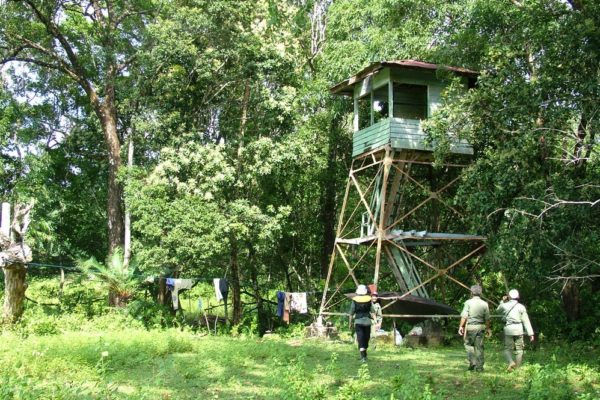
Rhino Protection Unit Observation Tower, Ujung Kulon National Park.
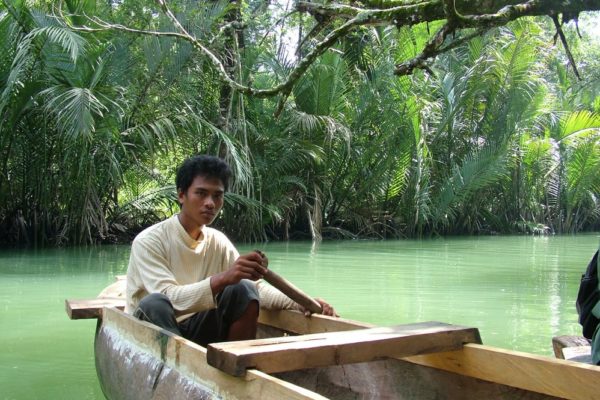
Rhino Protection Unit ranger canoeing across the thick forest.

Ujung Kulon National Park.
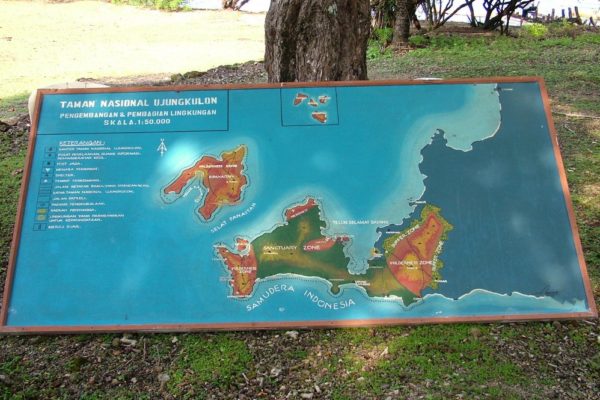
Map of Ujung Kulon National Park in Indonesia.
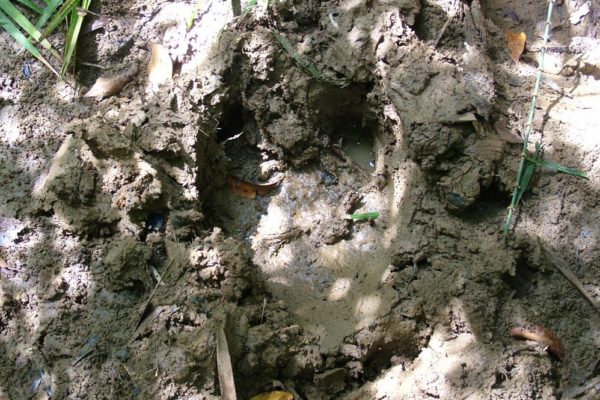
Very few people have seen Javan rhinos in the wild. Rangers are experts at tracking their footprints.
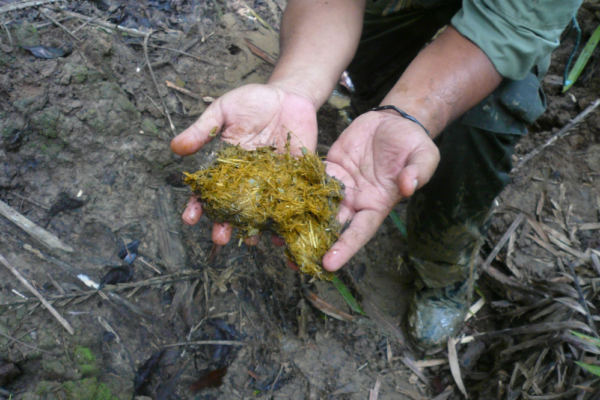
Ranger showing rhino dung as one of the signs looked for during patrol.
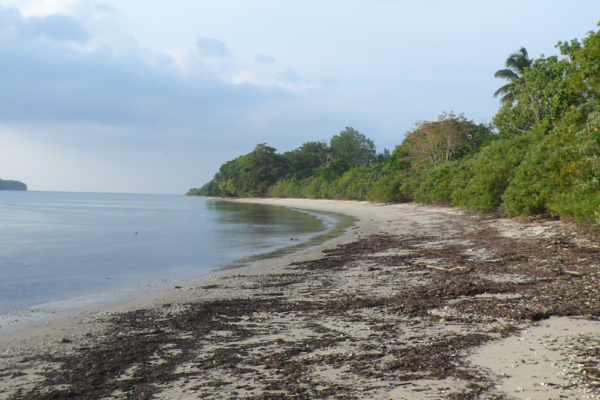
Javan rhinos live close to the shoreline of Ujung Kulon National Park.
Our work
We are supporting the RPUs that patrol the Park and its coastline, as well as the clearance of invasive Arenga palm, restoring thousands of hectares of rhino habitat. As the plans for UKNP move forward, we will be supporting research, including looking for a suitable second site for rhino reintroductions, and research into the age, fertility, and social structures of the existing Javan rhino population.
 Protecting Rhinos
Protecting Rhinos
 Reducing Illegal Horn Trade
Reducing Illegal Horn Trade
 Involving Communities
Involving Communities
 Bringing Experts Together
Bringing Experts Together


